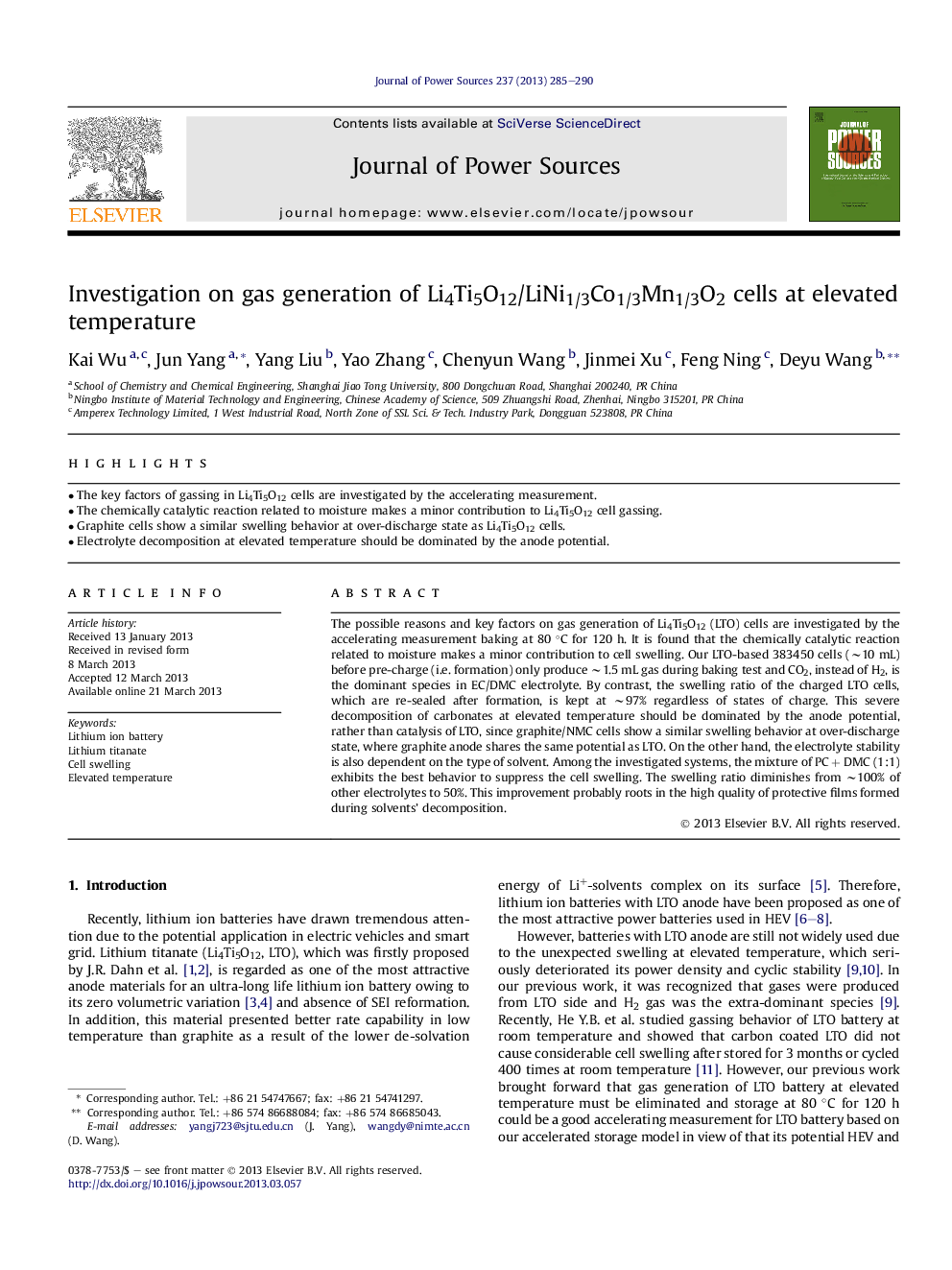| Article ID | Journal | Published Year | Pages | File Type |
|---|---|---|---|---|
| 1287719 | Journal of Power Sources | 2013 | 6 Pages |
•The key factors of gassing in Li4Ti5O12 cells are investigated by the accelerating measurement.•The chemically catalytic reaction related to moisture makes a minor contribution to Li4Ti5O12 cell gassing.•Graphite cells show a similar swelling behavior at over-discharge state as Li4Ti5O12 cells.•Electrolyte decomposition at elevated temperature should be dominated by the anode potential.
The possible reasons and key factors on gas generation of Li4Ti5O12 (LTO) cells are investigated by the accelerating measurement baking at 80 °C for 120 h. It is found that the chemically catalytic reaction related to moisture makes a minor contribution to cell swelling. Our LTO-based 383450 cells (∼10 mL) before pre-charge (i.e. formation) only produce ∼1.5 mL gas during baking test and CO2, instead of H2, is the dominant species in EC/DMC electrolyte. By contrast, the swelling ratio of the charged LTO cells, which are re-sealed after formation, is kept at ∼97% regardless of states of charge. This severe decomposition of carbonates at elevated temperature should be dominated by the anode potential, rather than catalysis of LTO, since graphite/NMC cells show a similar swelling behavior at over-discharge state, where graphite anode shares the same potential as LTO. On the other hand, the electrolyte stability is also dependent on the type of solvent. Among the investigated systems, the mixture of PC + DMC (1:1) exhibits the best behavior to suppress the cell swelling. The swelling ratio diminishes from ∼100% of other electrolytes to 50%. This improvement probably roots in the high quality of protective films formed during solvents' decomposition.
